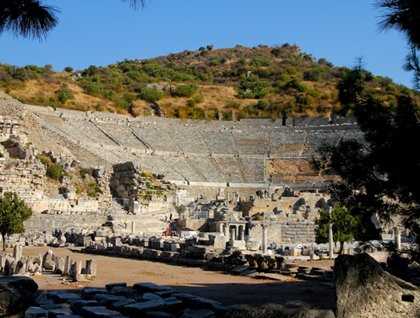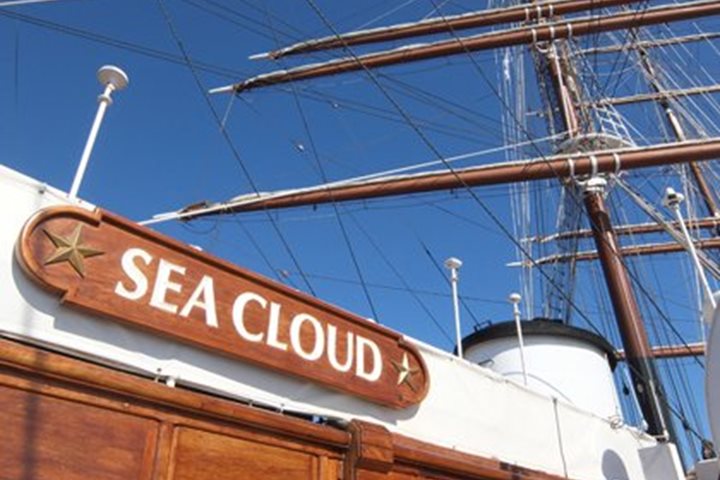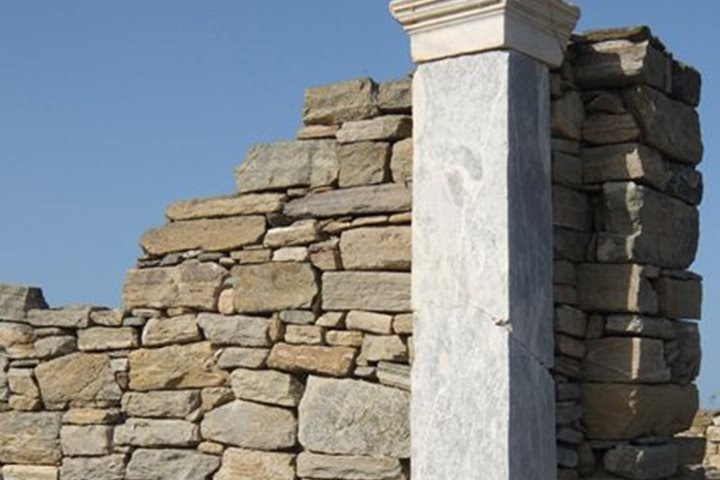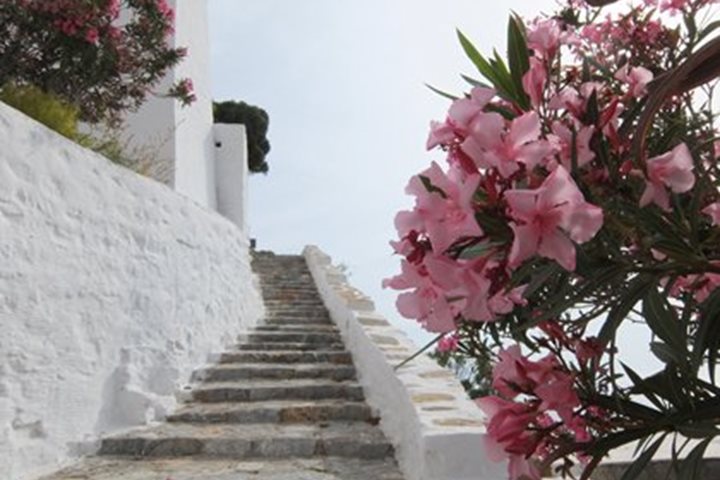Hard to believe that this will be the last sunrise we will experience from the decks of the Sea Cloud and what a glorious dawn it was as we slipped past the small Ottoman fort at the top of Pigeon Island and made our way to the dock at Kusadasi. Our route to Ephesus took us over rolling hills of Mediterranean pine and past dark emerald green citrus orchards, through the market town of Seljuk to the Magnesia Gate, the eastern gate of ancient Ephesus, situated high on the slopes of Mt. Pion. At its height in the 1st Century A.D., Ephesus was the capital of Roman Asia with a population of 250,000 people, many of whom made fortunes from trade of exotic spices, silks, slaves, marbles, and general produce that flowed through its huge port. The city was founded in the Bronze Age by the Hittites along the banks of the Cayster River and was known as Apasas (honey bee). It grew into a significant Ionic sanctuary site dedicated to the goddess Artemisia from the 8th century B.C. onwards. Ephesus was home to one of the Seven Wonders of the Ancient World—the Artemision, the largest Greek temple ever built—three times the size of the Parthenon in Athens.
Our visit to the site started at the Civic Agora in front of the Odeon or Bouleuterion—a small covered theater where the City Council made up of the city’s wealthiest citizens met and where they listened to musical concerts. We continued our tour walking down the Royal Walk between the columns of the Stoa of Basileios towards the monument of Memmius, which marks the division between the upper and lower halves of the city. Once through the monumental Gate of Hercules, we started to walk down Kuretes (Priests) Street that ends in the square in front of the Library of Celsus. In Antiquity, this was the heart of the city, flanked on each side by purple-marble colonnaded stoas (porticos) that were punctuated by shops, the Fountain of Trajan, and a Temple dedicated to Emperor Hadrian. After taking a side tour through the Roman Bath and the latrines, we crossed back over Kuretes Street and into a huge modern structure that covers six interconnected homes of the “Rich and Roman” that were built into the side of Mt. Bülbül. Oh—to be “Rich and Roman!” Peristyle houses with marble-columned courtyards, variegated marble veneered walls, mosaic floors, frescoed halls, running water, and interior plumbing. After taking our photos of the Library, we passed through the main Agora before having a quick look at massive theater that in its day held 25,000 spectators.
After leaving the site we quickly had to run the gauntlet of souvenir shops selling Turkish delight, guide books, “genuine fake watches,” and painted Turkish pottery before boarding our buses for a short visit to the Basilica of St John the Evangelist on the hill above Seljuk. Ephesus was one of the Seven Churches of Asia mentioned by St John in the Book of Revelations in the New Testament. Built near the top of Ayasuluk Hill the huge marble basilica was built by Emperor Justinian in the 6th century A.D. over the crypt of St John who died in Ephesus. We left the noonday sun for the cool, flower-filled courtyards of a carpet-weaving establishment where a sumptuous Turkish buffet awaited!







